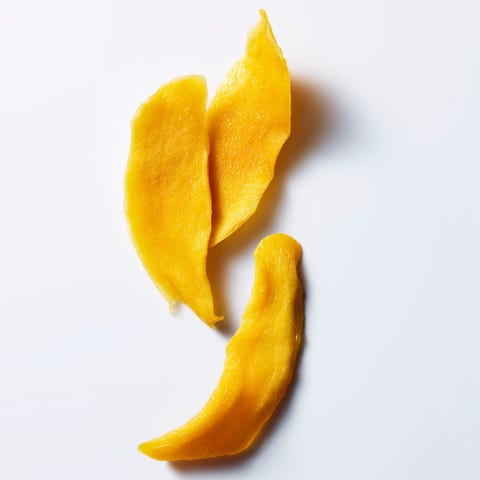
Dried fruit is the snack du jour—delish, portable, and (mostly) healthy. Brands like Peeled, Bare, and even Trader Joe’s are introducing more types on the reg. But this sweet treat can be less sunny than it looks. Take note with these tips and tricks from WH advisory board member Keri Glassman, R.D.
Dried fruit comes with a lot of fiber…and calories.
Like fresh fruit, the dehydrated kind has vitamins that are antioxidants (yay!). But because of the lack of moisture, its contents are much more concentrated. That includes fiber, which, though good for you, can cause cramps and bloat, especially if you don’t typically eat a lot of it.
It also has more sugar, and thus more calories. Even unsweetened fruit (which we rec) has sugars that aren’t always easy to digest in big amounts. Making matters worse? Sulfites (a common preservative) can cause diarrhea and headaches in some. Look for sulfite-free.

…But it’s so handy!
Done right, noshing on these sweeties can help you avoid less nutritious snacking. If you heart chips, try baked or freeze-dried fruit for a nice crunch. Craving gummies? Shop for soft varieties. And P.S., a spiced flavor, like chili-dusted mango, makes it harder to down a whole bag at once.
Eat it the right way:
This article originally appeared in the September 2018 issue of Women’s Health. For more great advice, pick up a copy on newsstands now.
Source: Read Full Article